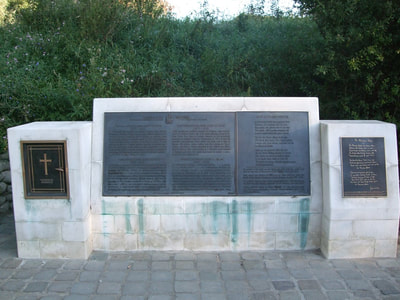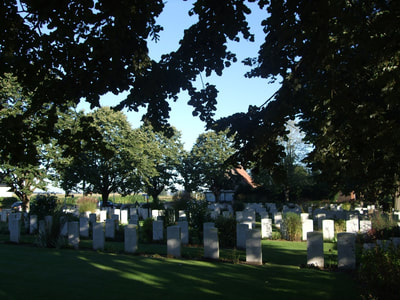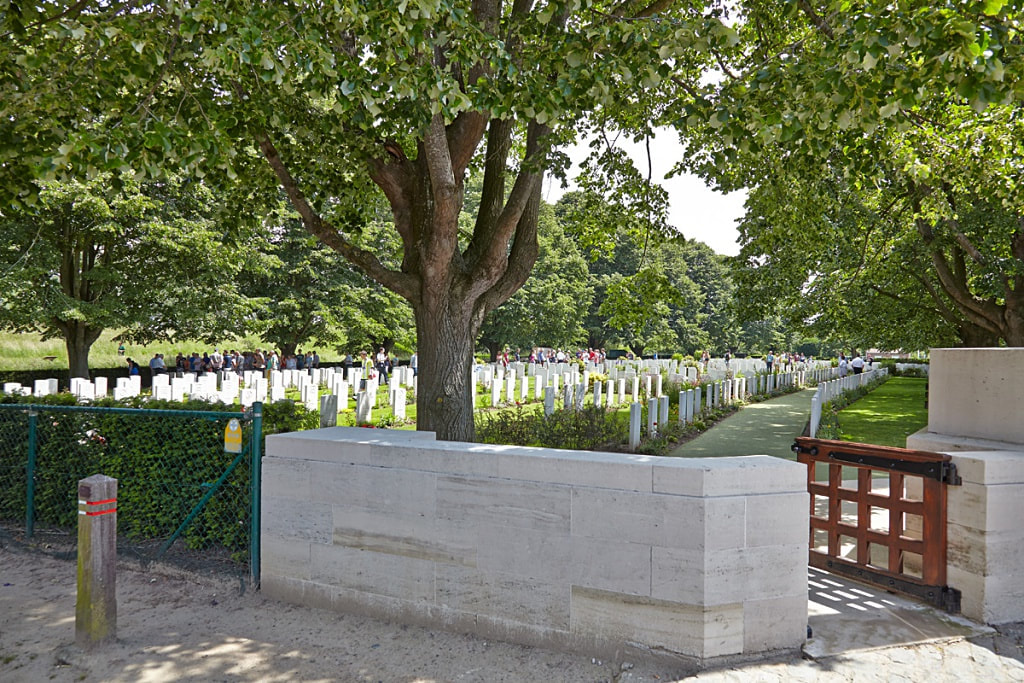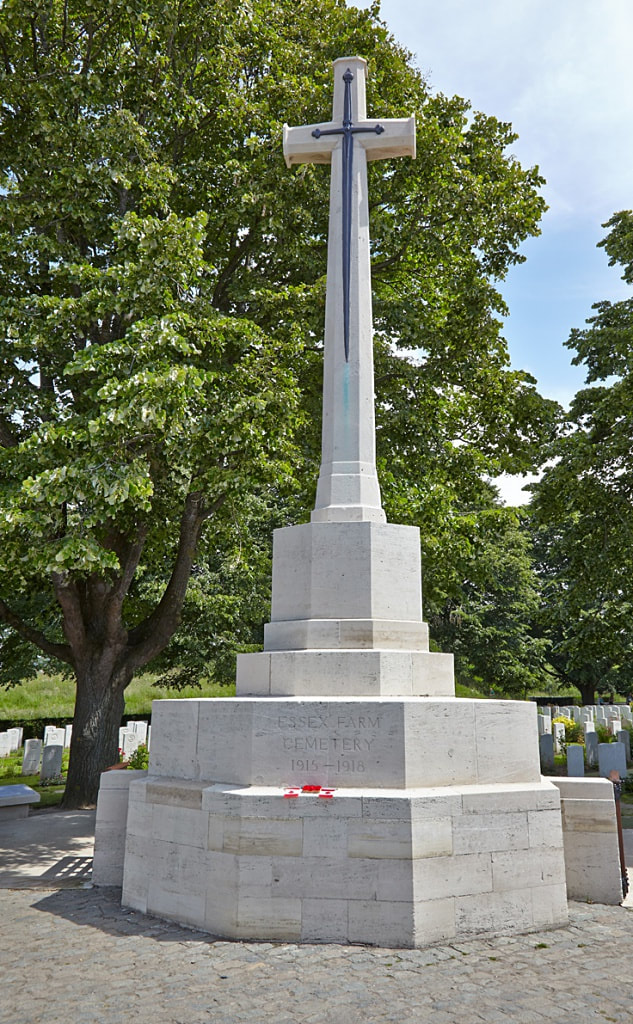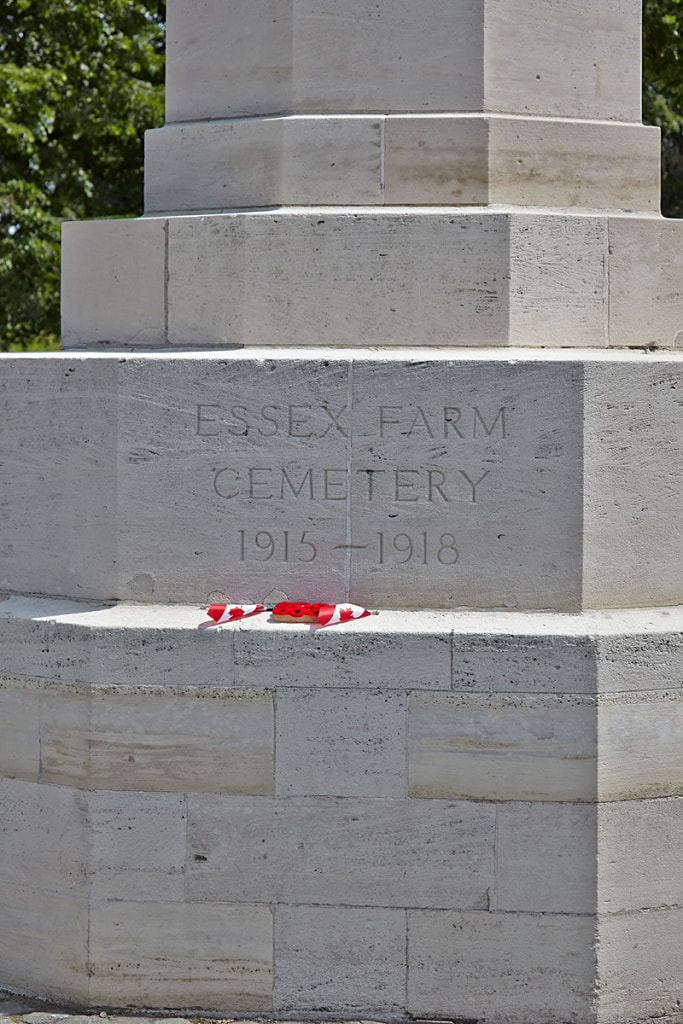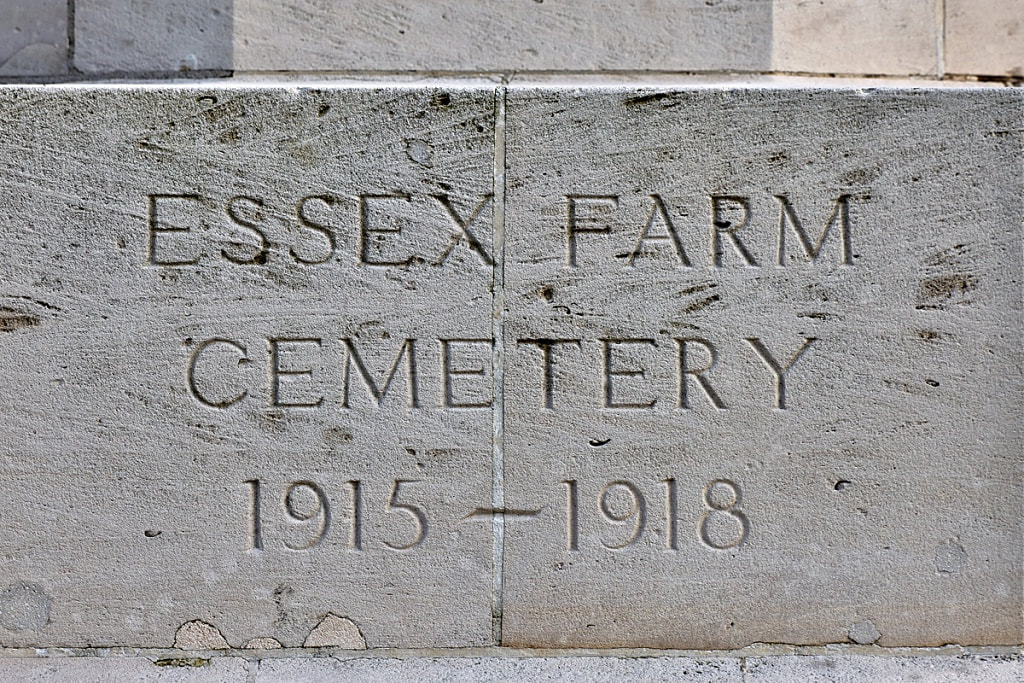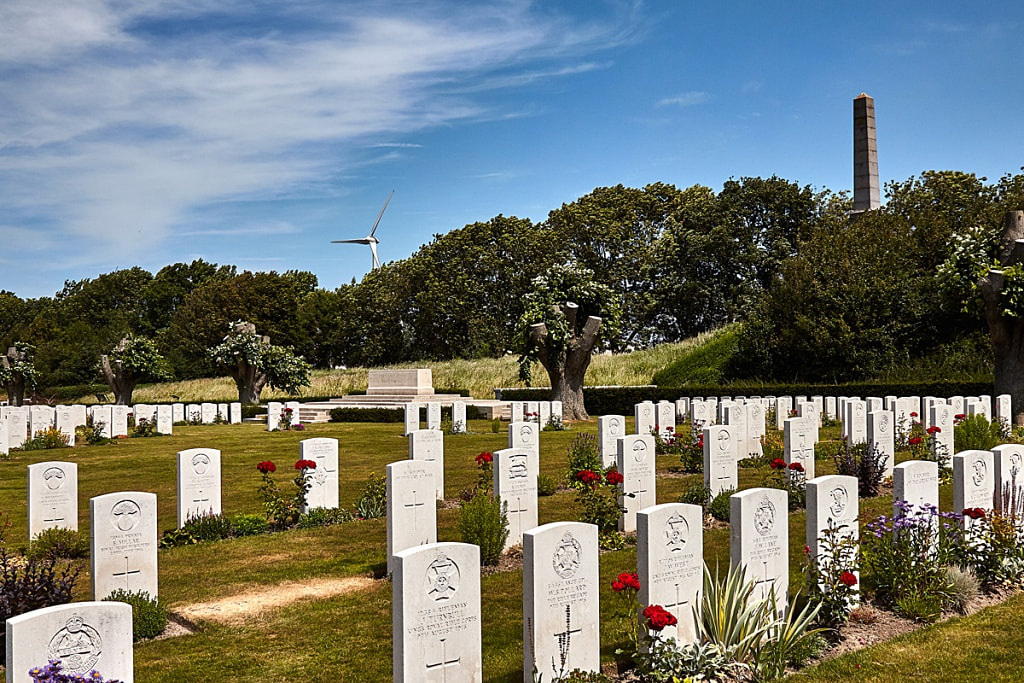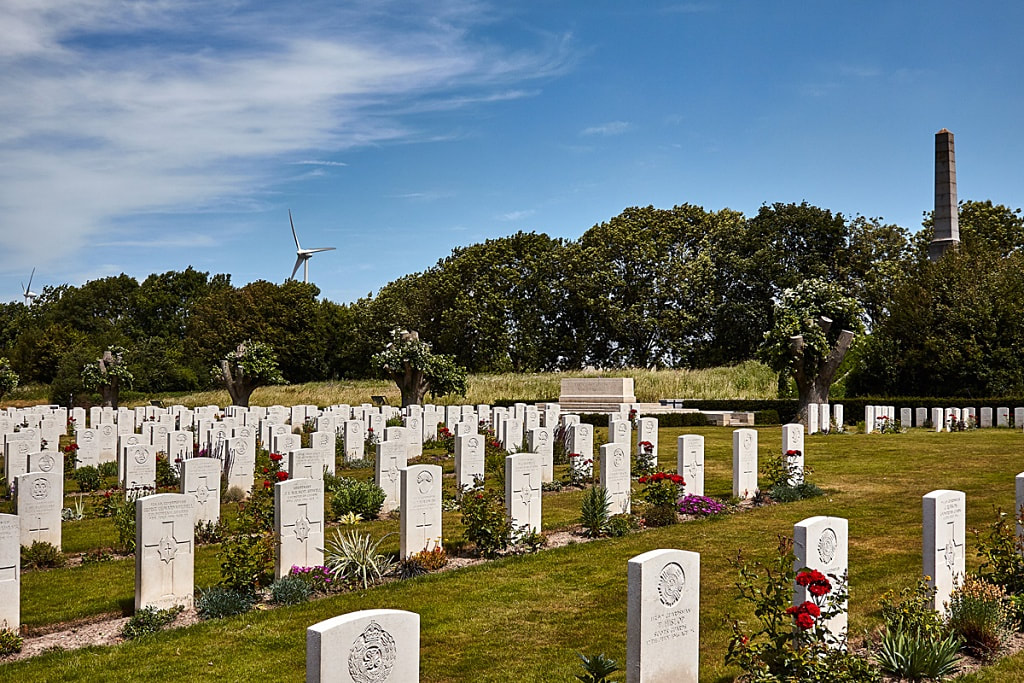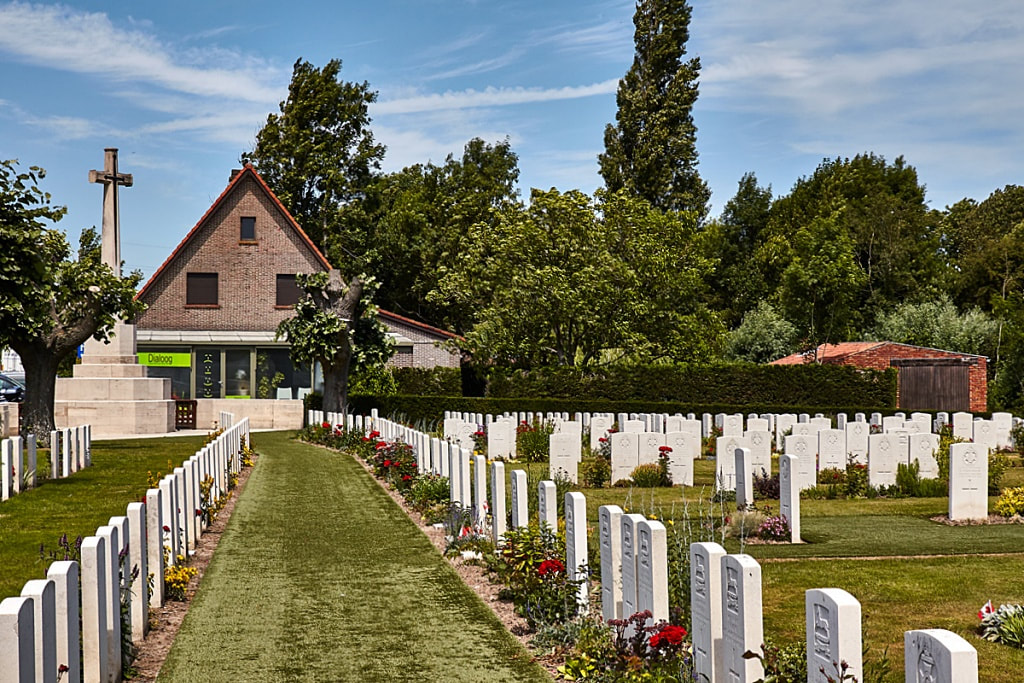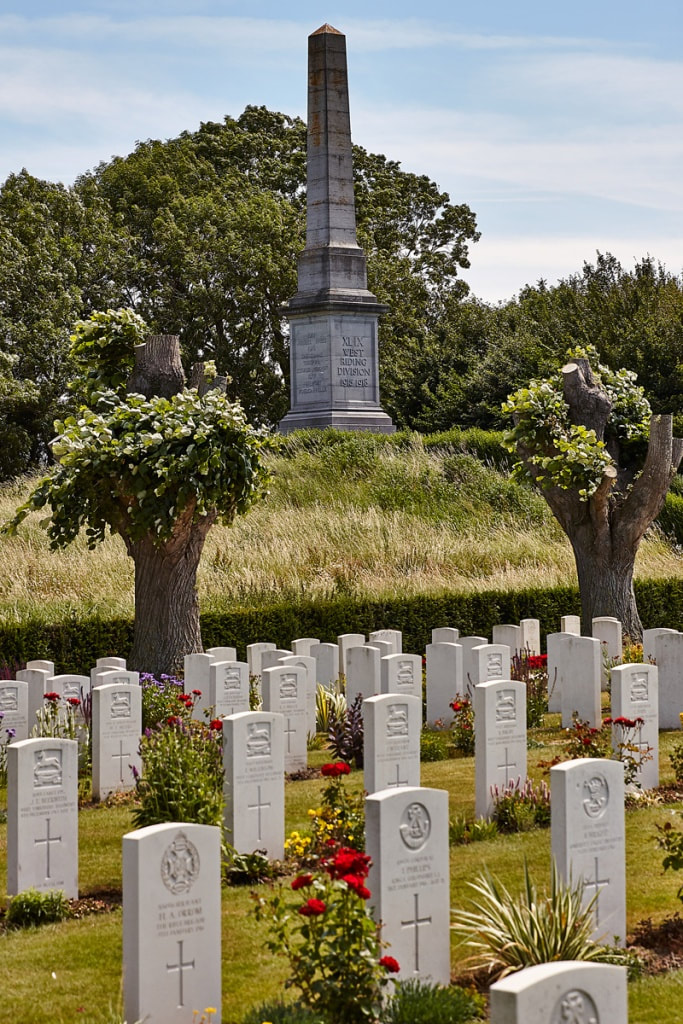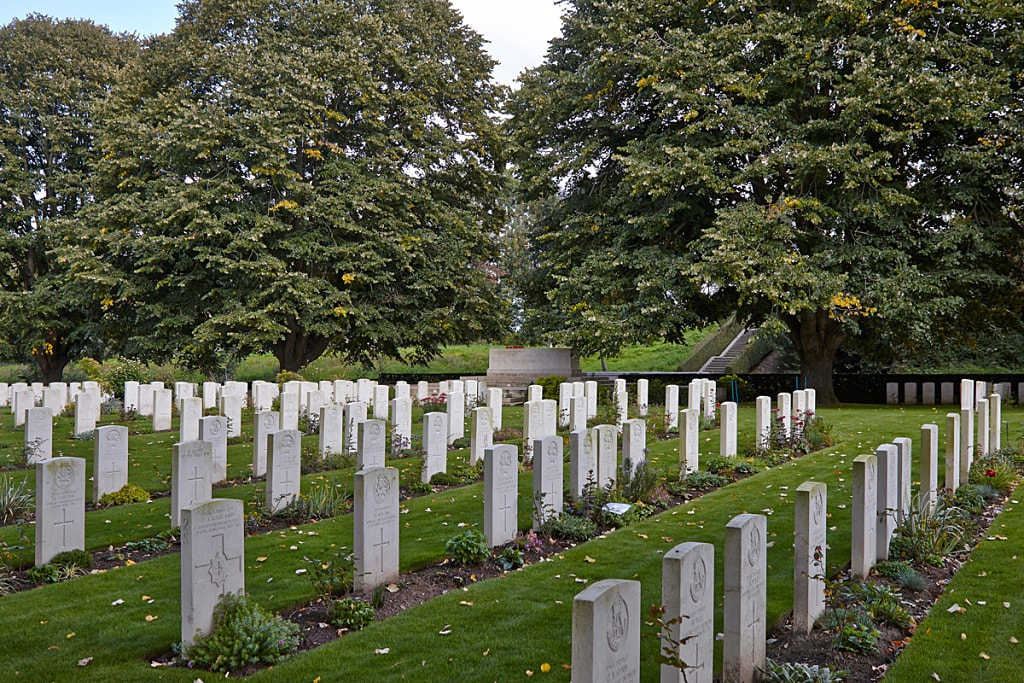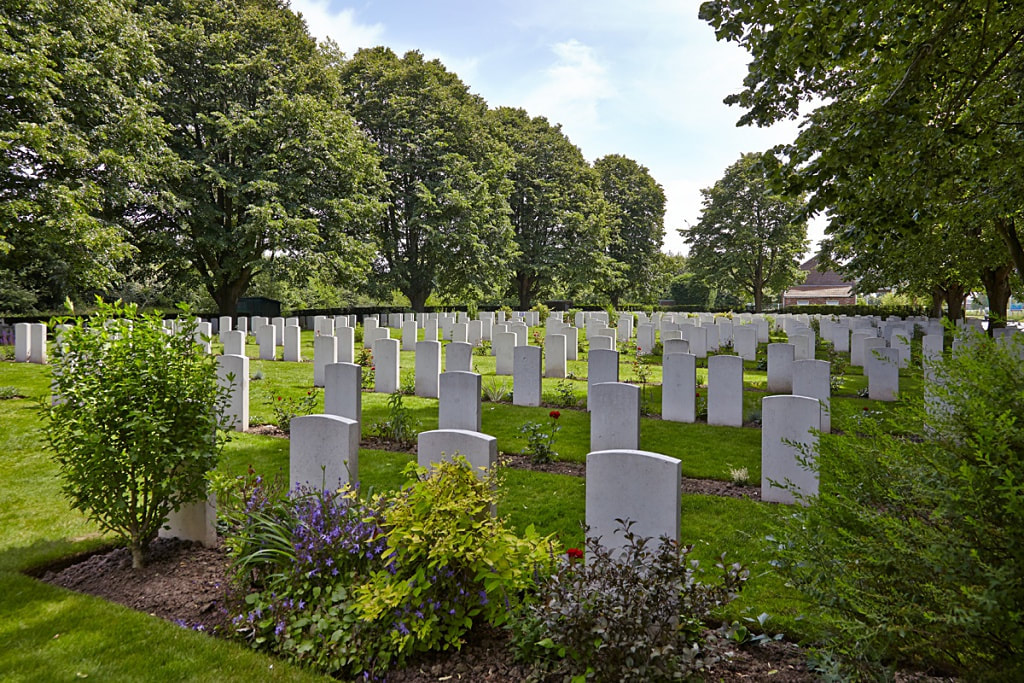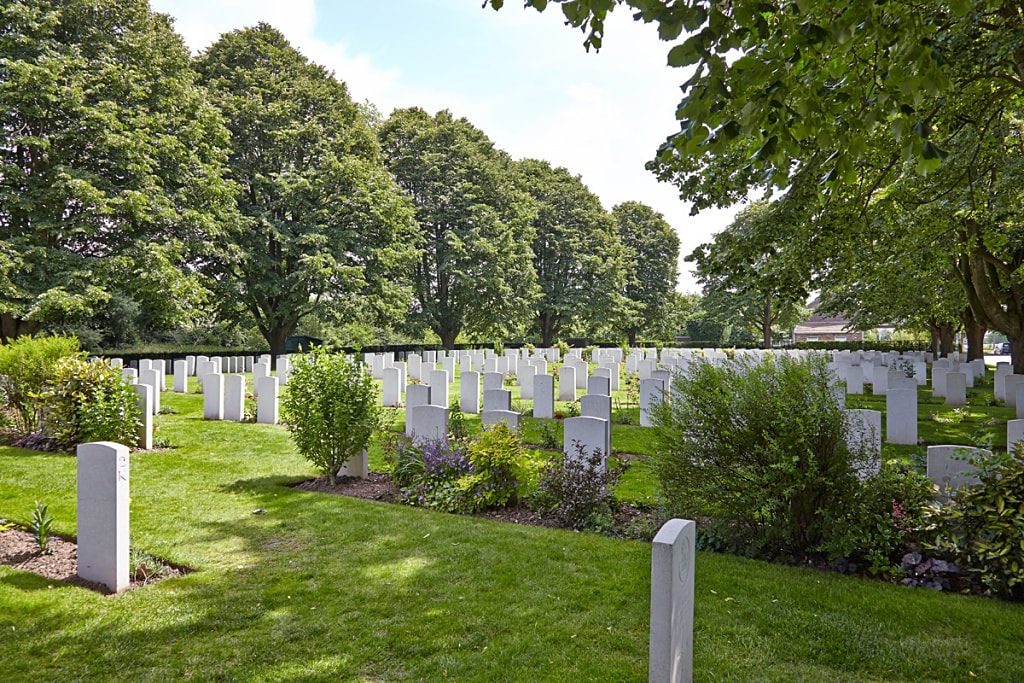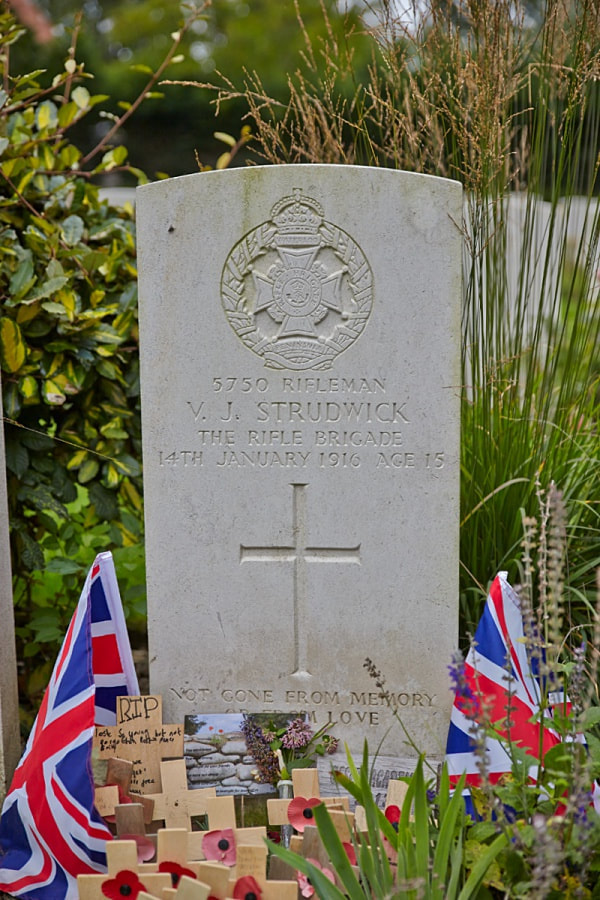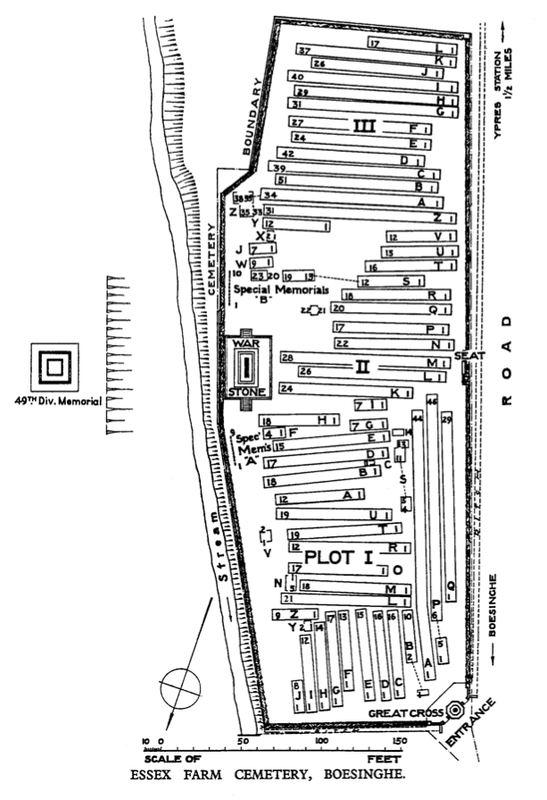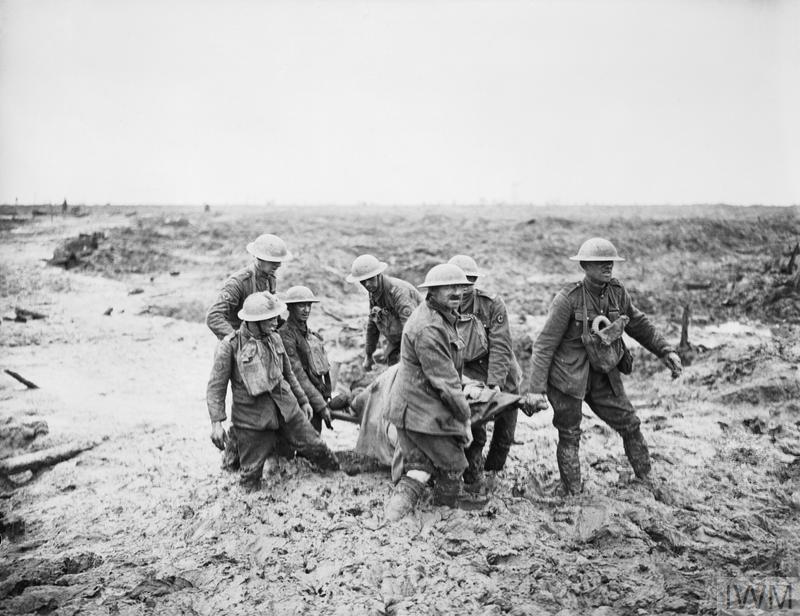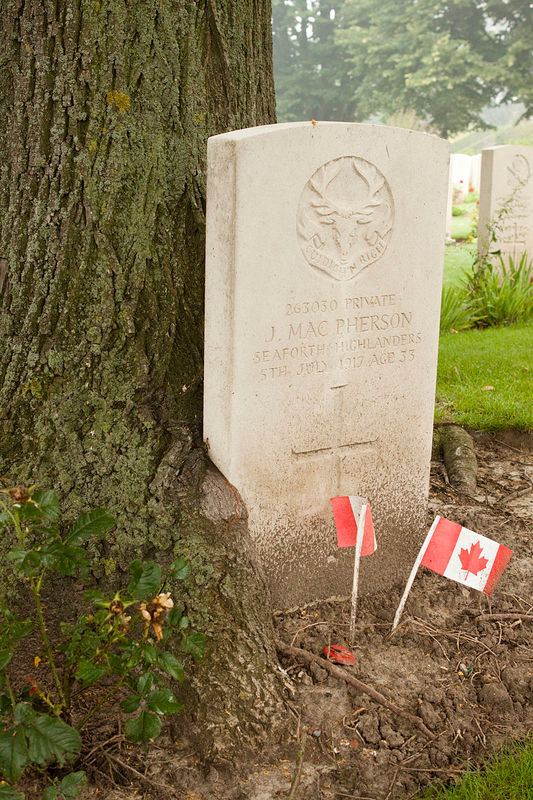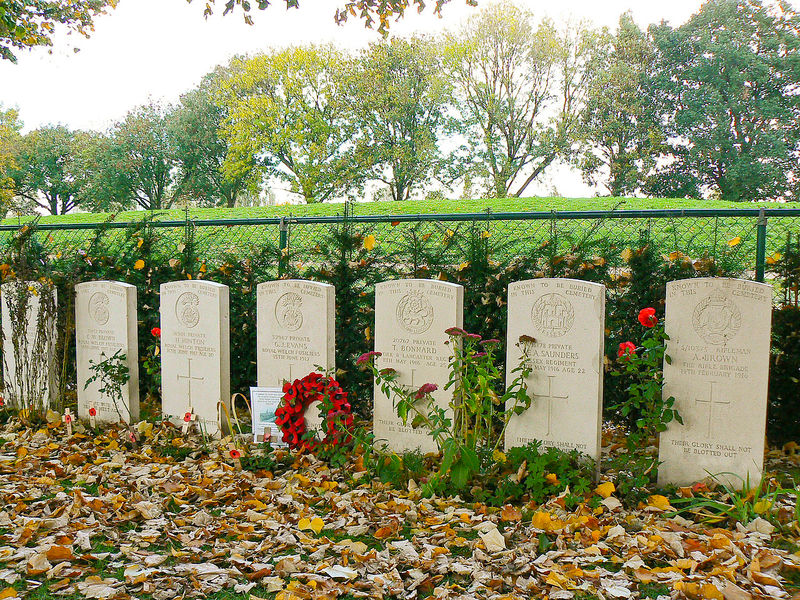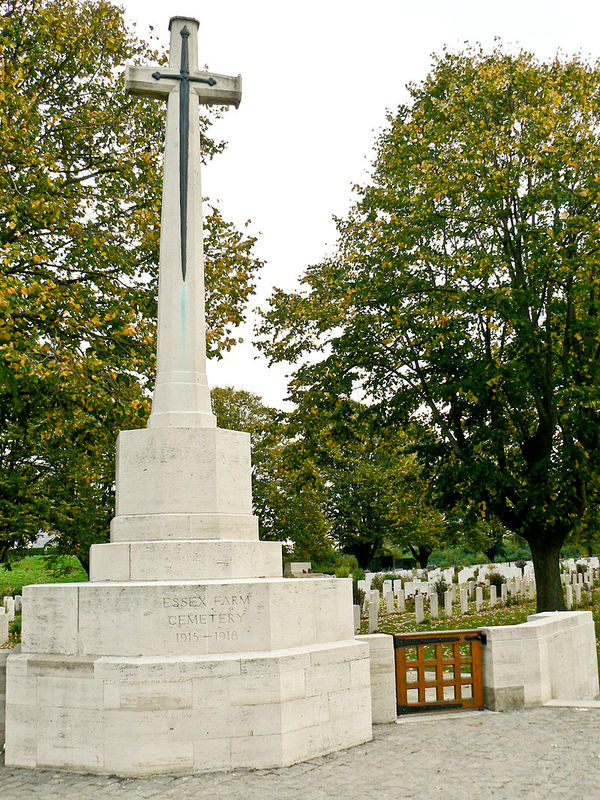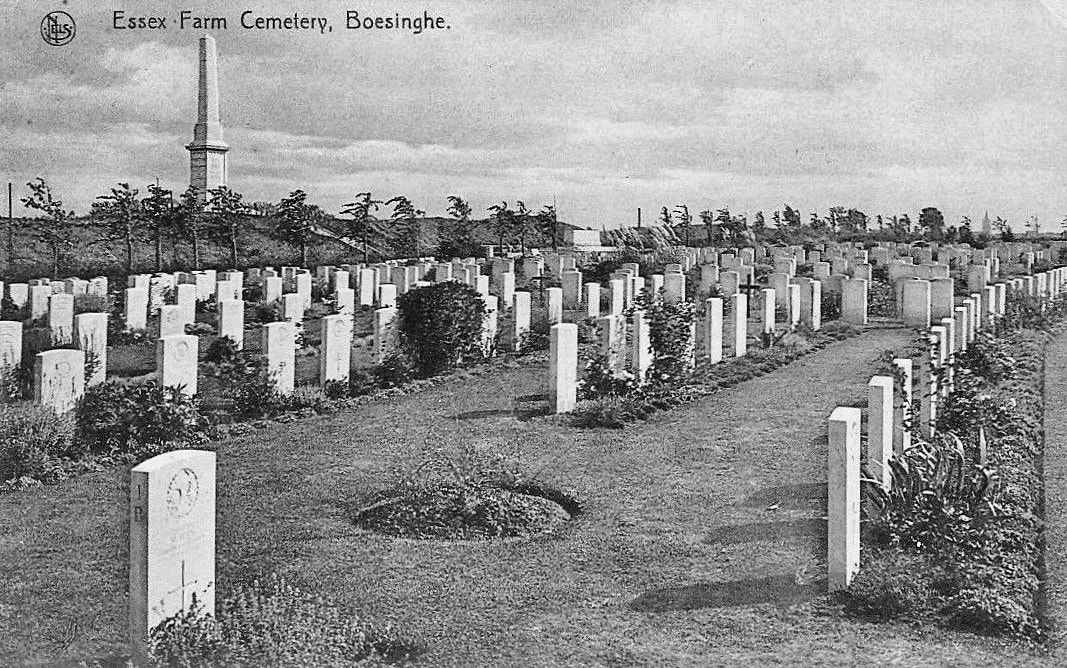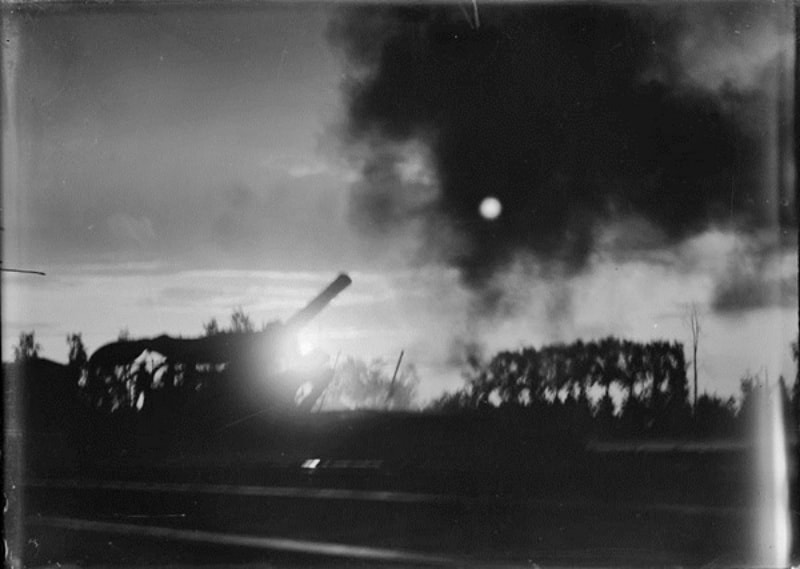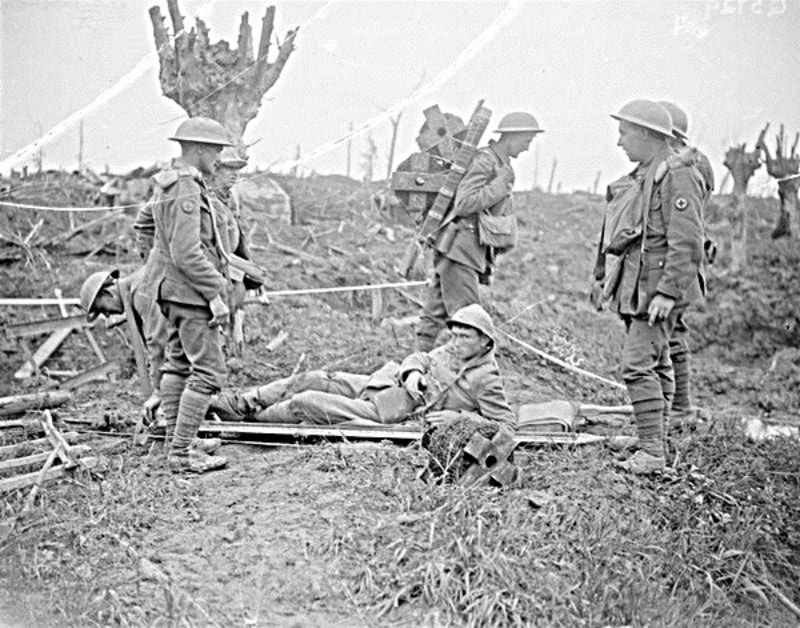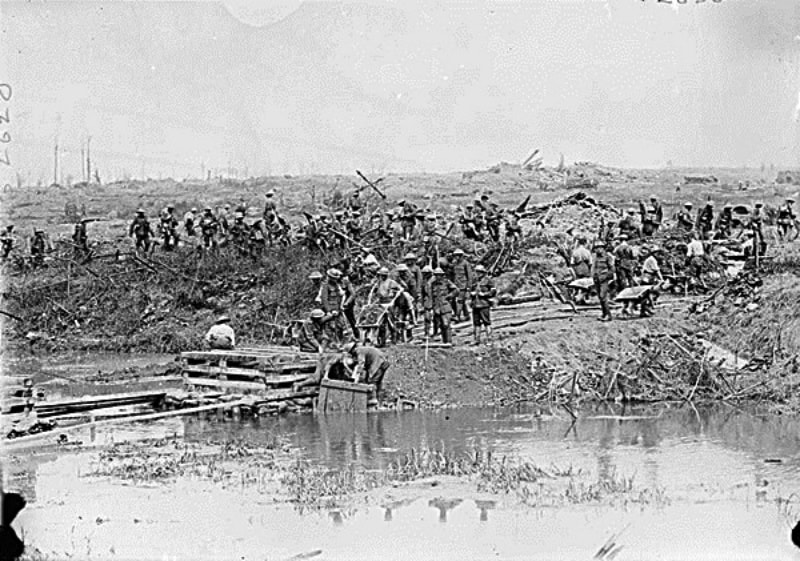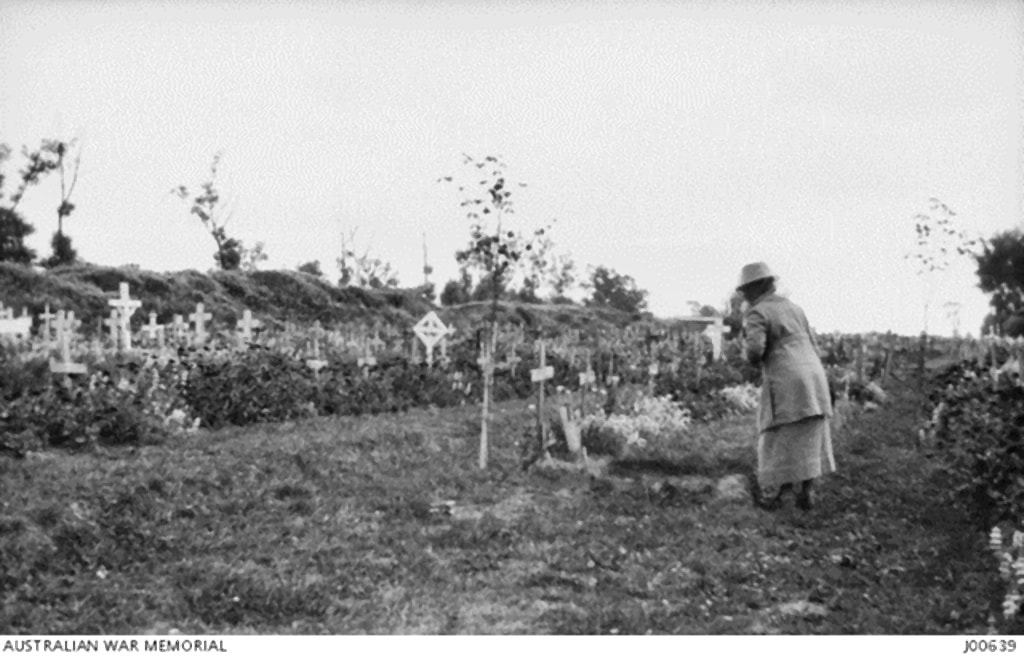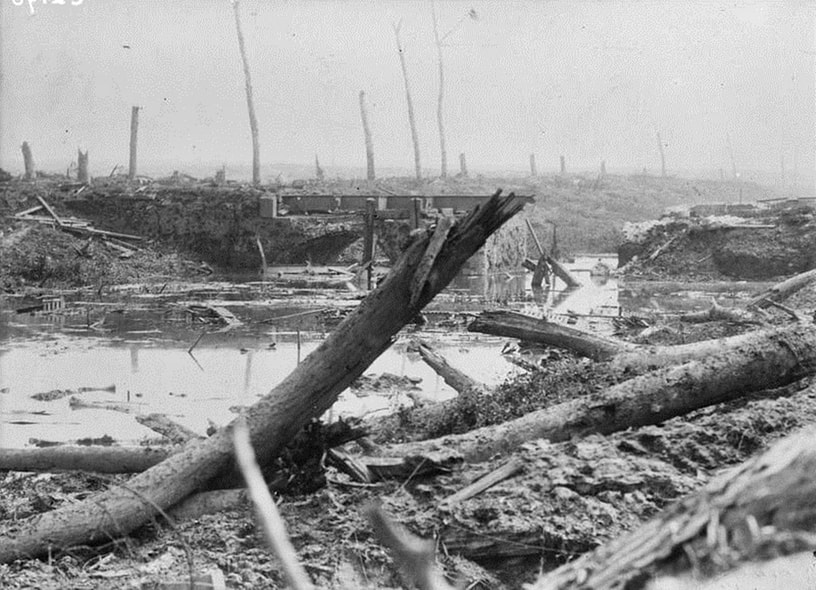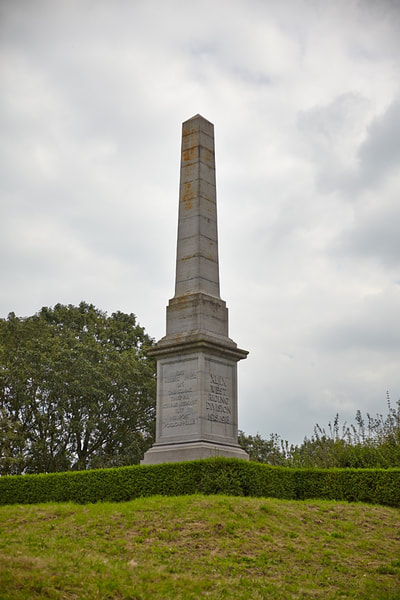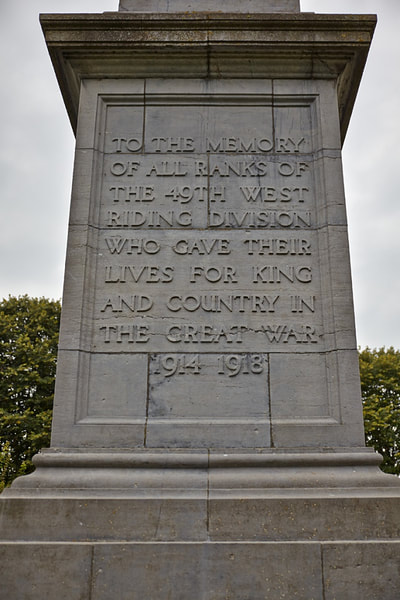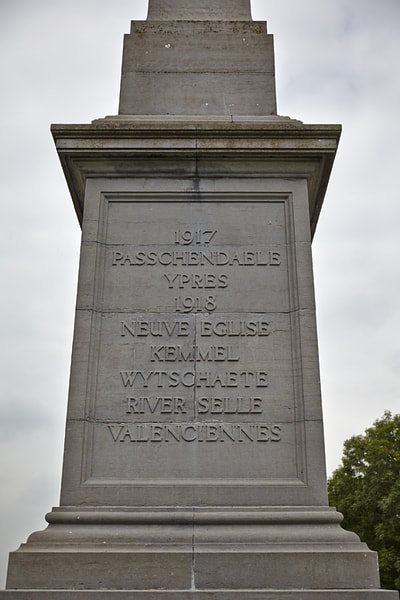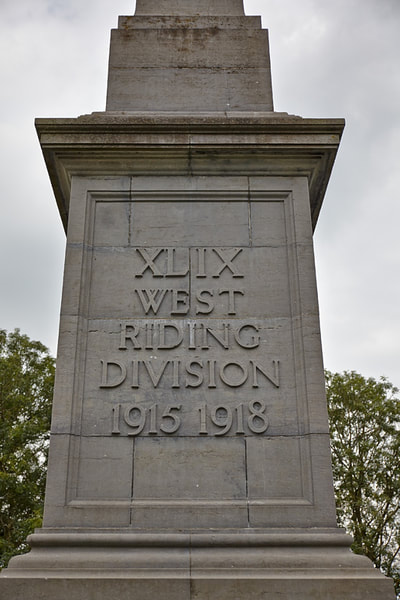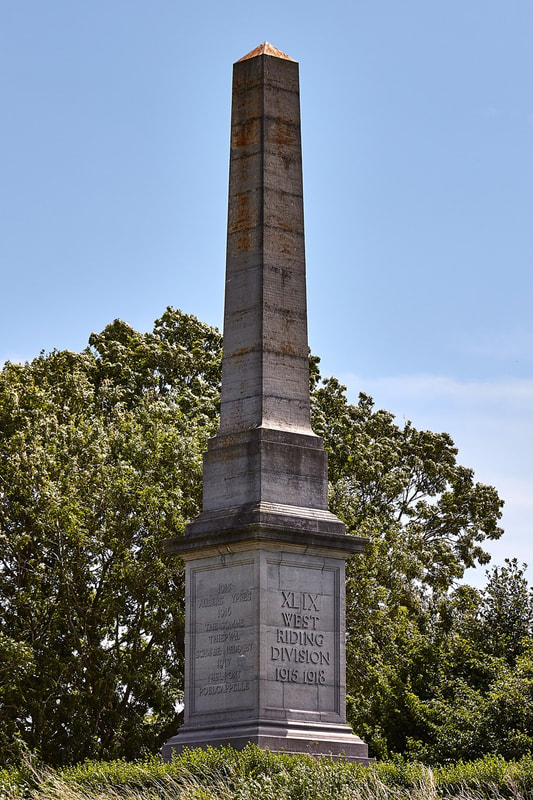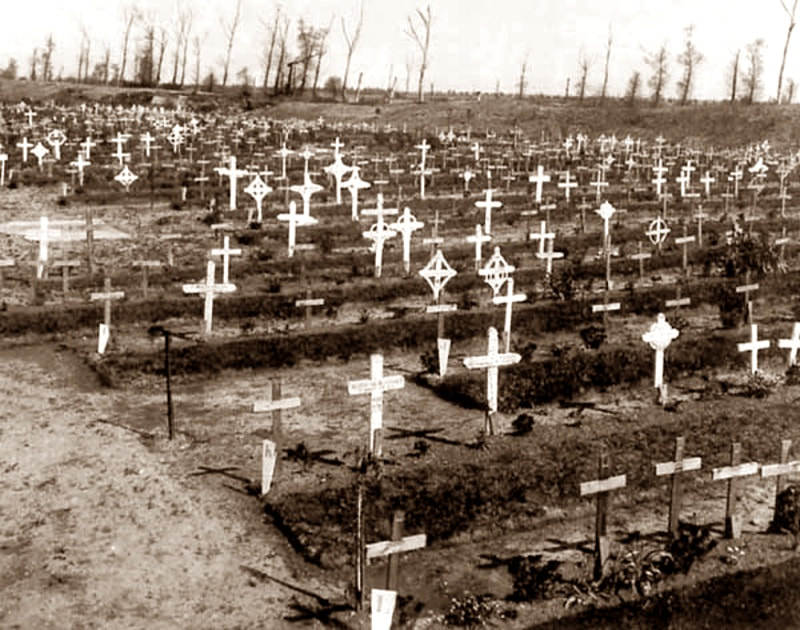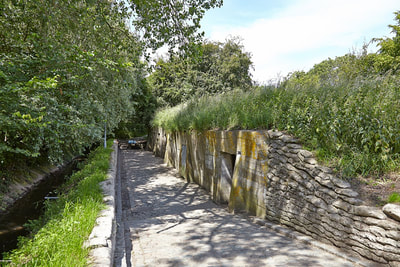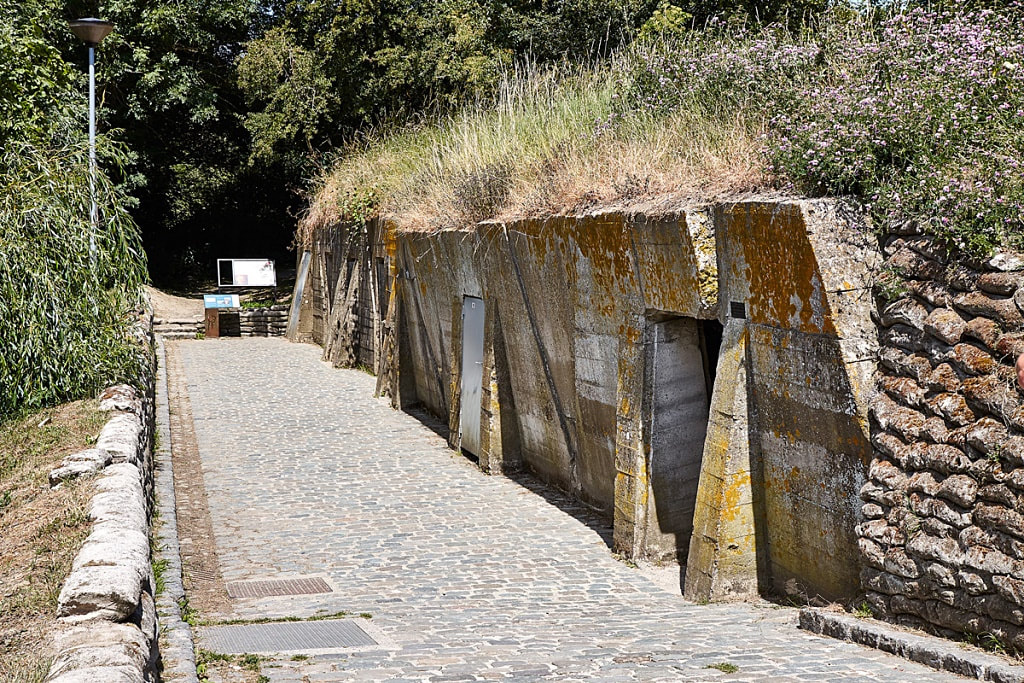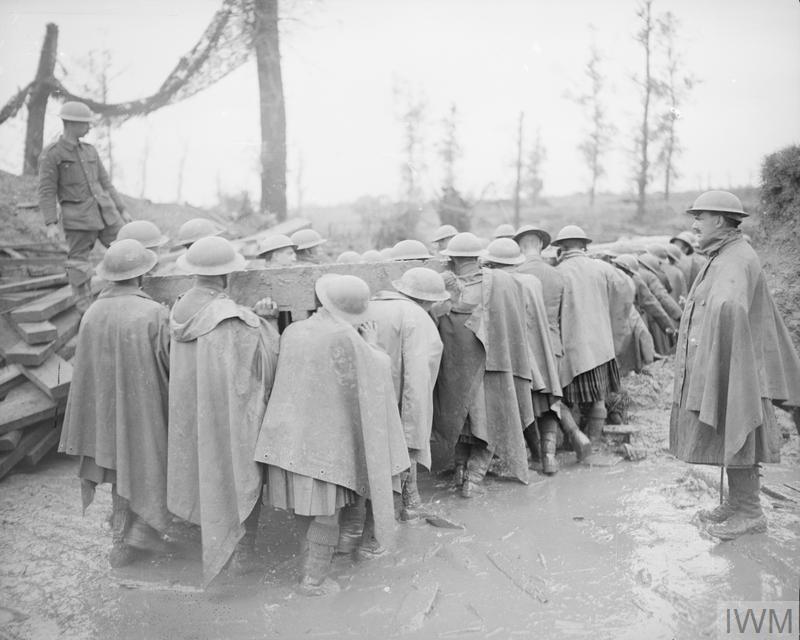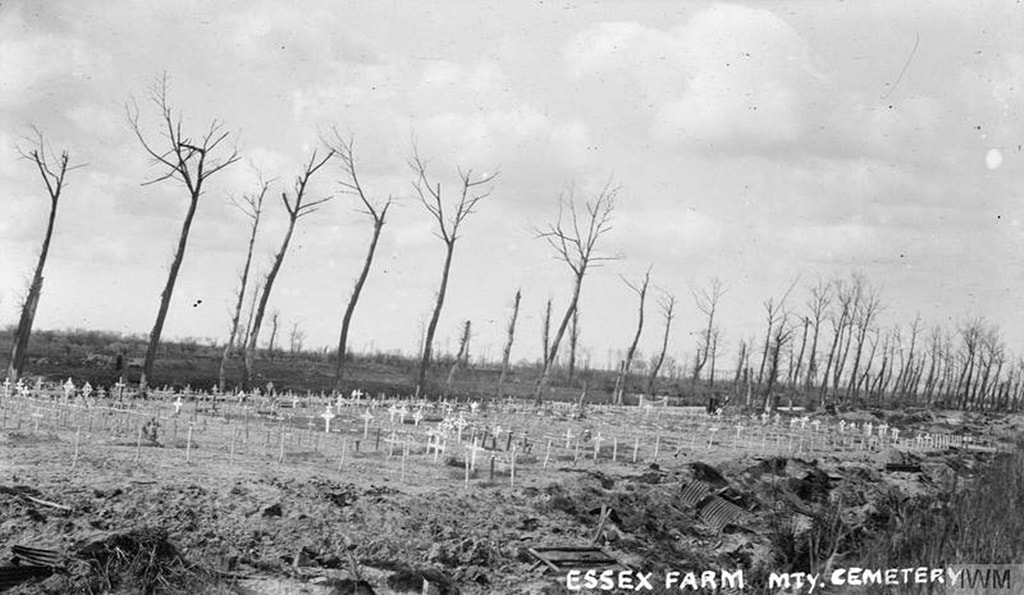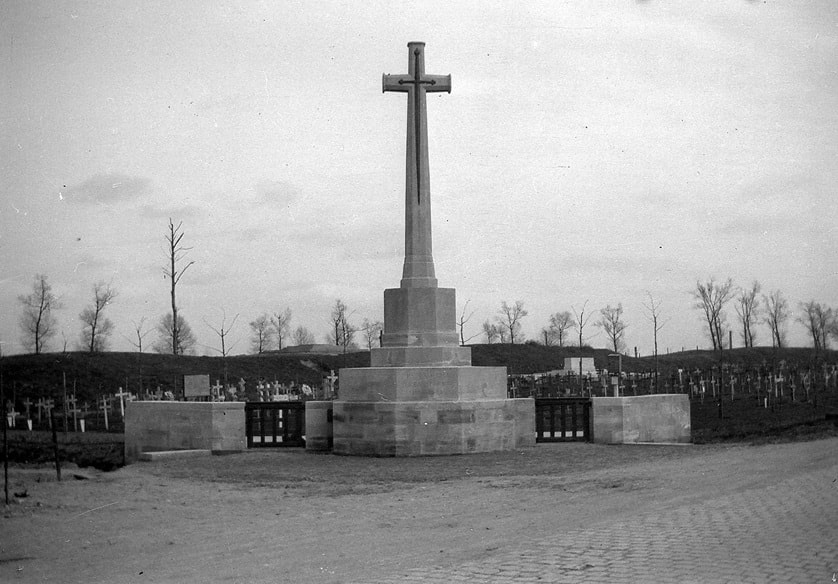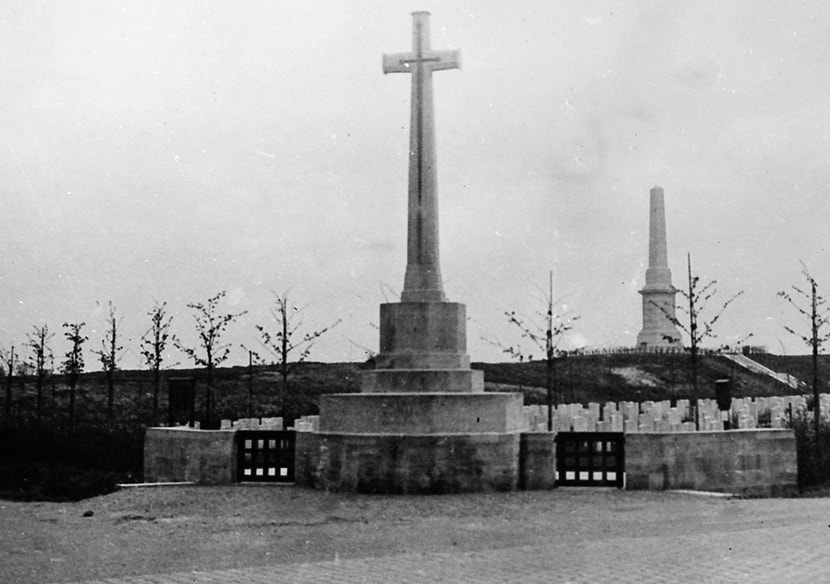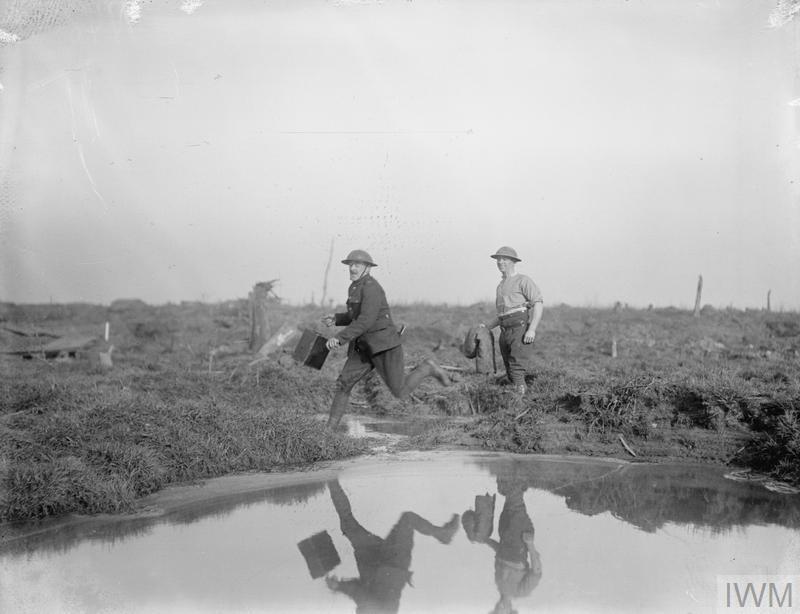ESSEX FARM CEMETERY
West-Vlaanderen
Belgium
Location Information
Boezinge is a village in the province of West Flanders, north of Ieper on the Diksmuidseweg road (N369). From the station turn left into M.Fochlaan and go to the roundabout, then turn right and continue to the next roundabout. Turn left and drive to the next roundabout and then turn right into Oude Veurnestraat. At the roundabout turn left onto the Diksmuidseweg, and follow the road under the motorway bridge; the Cemetery will be found on the right hand side of the road.
Visiting Information
Wheelchair access to this cemetery with some difficulty.
Historical Information
The land south of Essex Farm was used as a dressing station cemetery from April 1915 to August 1917. The burials were made without definite plan and some of the divisions which occupied this sector may be traced in almost every part of the cemetery, but the 49th (West Riding) Division buried their dead of 1915 in Plot I, and the 38th (Welsh) Division used Plot III in the autumn of 1916.
There are 1,206 servicemen of the First World War buried or commemorated in this cemetery. 106 of the burials are unidentified but special memorials commemorate 19 casualties known or believed to be buried among them.
The cemetery was designed by Sir Reginald Blomfield and Noel Ackroyd Rew
It was close by Essex Farm Cemetery that Lieutenant-Colonel John McCrae of the Canadian Army Medical Corps wrote the poem ' In Flanders Fields' in May 1915.
The 49th Division Memorial is immediately behind the cemetery, on the canal bank.
Total Burials: 1,206
Identified Casualties: United Kingdom 1,091, Canada 6, Germany 3. Total 1,100.
Unidentified Casualties: 106.
Dedications
R28593 Rifleman Charles Bixby, 17th Bn. King's Royal Rifle Corps, Died 19th December 1916 age 39yrs. Plot II. Y. 8.
Born in Clerkenwell, Middlesex “ We never met but forever in our thoughts”
Remembered by Dave Bixby
Boezinge is a village in the province of West Flanders, north of Ieper on the Diksmuidseweg road (N369). From the station turn left into M.Fochlaan and go to the roundabout, then turn right and continue to the next roundabout. Turn left and drive to the next roundabout and then turn right into Oude Veurnestraat. At the roundabout turn left onto the Diksmuidseweg, and follow the road under the motorway bridge; the Cemetery will be found on the right hand side of the road.
Visiting Information
Wheelchair access to this cemetery with some difficulty.
Historical Information
The land south of Essex Farm was used as a dressing station cemetery from April 1915 to August 1917. The burials were made without definite plan and some of the divisions which occupied this sector may be traced in almost every part of the cemetery, but the 49th (West Riding) Division buried their dead of 1915 in Plot I, and the 38th (Welsh) Division used Plot III in the autumn of 1916.
There are 1,206 servicemen of the First World War buried or commemorated in this cemetery. 106 of the burials are unidentified but special memorials commemorate 19 casualties known or believed to be buried among them.
The cemetery was designed by Sir Reginald Blomfield and Noel Ackroyd Rew
It was close by Essex Farm Cemetery that Lieutenant-Colonel John McCrae of the Canadian Army Medical Corps wrote the poem ' In Flanders Fields' in May 1915.
The 49th Division Memorial is immediately behind the cemetery, on the canal bank.
Total Burials: 1,206
Identified Casualties: United Kingdom 1,091, Canada 6, Germany 3. Total 1,100.
Unidentified Casualties: 106.
Dedications
R28593 Rifleman Charles Bixby, 17th Bn. King's Royal Rifle Corps, Died 19th December 1916 age 39yrs. Plot II. Y. 8.
Born in Clerkenwell, Middlesex “ We never met but forever in our thoughts”
Remembered by Dave Bixby
Essex Farm Cemetery
Cemetery images in gallery below © Geerhard Joos
17114 Private Thomas Barrett, V. C.
7th Bn. South Staffordshire Regiment
27th July 1917, aged 22.
Plot I. Z. 8.
Son of James and Sarah Ann Barratt.
Citation
An extract from "The London Gazette," No. 30272, dated 4th Sept., 1917, records the following:- "For most conspicuous bravery when as Scout to a patrol he worked his way towards the enemy line with the greatest gallantry and determination, in spite of continuous fire from hostile snipers at close range. These snipers he stalked and killed. Later his patrol was similarly held up, and again he disposed of the snipers. When during the subsequent withdrawal of the patrol it was observed that a party of the enemy were endeavouring to outflank them, Pte. Barratt at once volunteered to cover the retirement, and this he succeeded in accomplishing. His accurate shooting caused many casualties to the enemy, and prevented their advance. Throughout the enterprise he was under heavy machine gun and rifle fire, and his splendid example of coolness and daring was beyond all praise. After safely regaining our lines, this very gallant soldier was killed by a shell."
Headstone
Pictures in this gallery © Werner Van Caneghem
Cemetery images in this gallery © Geerhard Joos
49th Division Memorial
Advanced Dressing Station
Lieutenant-Colonel John Alexander McCrae and "In Flanders Fields"
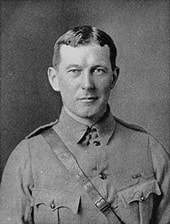
Lieutenant-Colonel John Alexander McCrae, 30th November 1872 - 28th January 1918
His grave is at Wimereux Communal Cemetery
Though various legends have developed as to the inspiration for the poem, the most commonly held belief is that McCrae wrote "In Flanders Fields" on May 3, 1915, the day after presiding over the funeral and burial of his friend Lieutenant Alex Helmer, who had been killed during the Second Battle of Ypres. The poem was written as he sat upon the back of a medical field ambulance near an advance dressing post at Essex Farm, just north of Ypres. The poppy, which was a central feature of the poem, grew in great numbers in the spoiled earth of the battlefields and cemeteries of Flanders. McCrae later discarded the poem, but it was saved by a fellow officer and sent in to Punch magazine, which published it later that year.
In Flanders Fields
In Flanders fields the poppies blow
Between the crosses, row on row,
That mark our place; and in the sky
The larks, still bravely singing, fly
Scarce heard amid the guns below.
We are the dead. Short days ago
We lived, felt dawn, saw sunset glow,
Loved, and were loved, and now we lie
In Flanders fields.
Take up our quarrel with the foe:
To you from failing hands, we throw
The torch; be yours to hold it high.
If ye break faith with us who die
We shall not sleep, though poppies grow
In Flanders fields.
His grave is at Wimereux Communal Cemetery
Though various legends have developed as to the inspiration for the poem, the most commonly held belief is that McCrae wrote "In Flanders Fields" on May 3, 1915, the day after presiding over the funeral and burial of his friend Lieutenant Alex Helmer, who had been killed during the Second Battle of Ypres. The poem was written as he sat upon the back of a medical field ambulance near an advance dressing post at Essex Farm, just north of Ypres. The poppy, which was a central feature of the poem, grew in great numbers in the spoiled earth of the battlefields and cemeteries of Flanders. McCrae later discarded the poem, but it was saved by a fellow officer and sent in to Punch magazine, which published it later that year.
In Flanders Fields
In Flanders fields the poppies blow
Between the crosses, row on row,
That mark our place; and in the sky
The larks, still bravely singing, fly
Scarce heard amid the guns below.
We are the dead. Short days ago
We lived, felt dawn, saw sunset glow,
Loved, and were loved, and now we lie
In Flanders fields.
Take up our quarrel with the foe:
To you from failing hands, we throw
The torch; be yours to hold it high.
If ye break faith with us who die
We shall not sleep, though poppies grow
In Flanders fields.
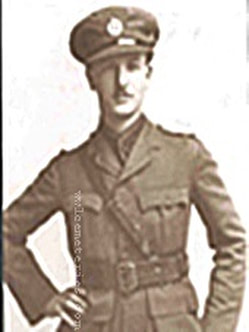
Second Lieutenant
Harold Thomas Butcher
11th Bn. Rifle Brigade
18th February 1916, aged 25.
Plot I. M. 10.
Son of Henry W. and Ellen M. Butcher, of Purley, Surrey. Served in London Rifle Brigade previous to Commission.
Harold Thomas Butcher
11th Bn. Rifle Brigade
18th February 1916, aged 25.
Plot I. M. 10.
Son of Henry W. and Ellen M. Butcher, of Purley, Surrey. Served in London Rifle Brigade previous to Commission.

G/8803 Private
Edwin Thomas Daniels
1st Bn. The Buffs (East Kent Regiment)
8th June 1916, aged 30.
Plot II. U. 14.
Son of Thomas and Elizabeth Daniels, of Whitfield, Dover; husband of Lilian A. Daniels, of Crabble Farm Nursery, River, Dover.
Edwin Thomas Daniels
1st Bn. The Buffs (East Kent Regiment)
8th June 1916, aged 30.
Plot II. U. 14.
Son of Thomas and Elizabeth Daniels, of Whitfield, Dover; husband of Lilian A. Daniels, of Crabble Farm Nursery, River, Dover.

Lieutenant
C. R. Le Blanc-Smith
8th Bn. Rifle Brigade
27th November 1915.
Plot I. R. 9.
C. R. Le Blanc-Smith
8th Bn. Rifle Brigade
27th November 1915.
Plot I. R. 9.

Second Lieutenant
Basil George Hope Maclear, M. C.
4th Bn. Grenadier Guards
26th July 1916, aged 30.
Plot II. Z. 19.
Son of the late Rev. Canon G. F. Maclear, D.D. (Warden of St. Augustine's College, Canterbury, Kent). Left his farm in Cape Province, South Africa (where he had been since 1904), Aug.,1915 to serve.
Basil George Hope Maclear, M. C.
4th Bn. Grenadier Guards
26th July 1916, aged 30.
Plot II. Z. 19.
Son of the late Rev. Canon G. F. Maclear, D.D. (Warden of St. Augustine's College, Canterbury, Kent). Left his farm in Cape Province, South Africa (where he had been since 1904), Aug.,1915 to serve.
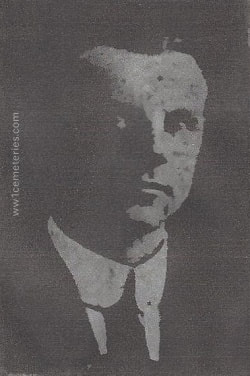
28765 Private
Frederick Emanuel Moore
16th Bn. Canadian Infantry
3rd May 1915.
Plot I. L. 8.
Frederick Emanuel Moore
16th Bn. Canadian Infantry
3rd May 1915.
Plot I. L. 8.
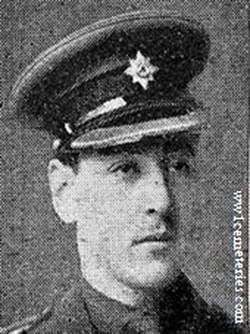
Lieutenant
Frederick Leopold Pusch, D. S. O.
1st Bn. Irish Guards
27th June 1916, aged 20.
Plot I. A. 1.
Son of Emile and Helen Pusch, of 5, Albert Court, Kensington Gore; London. His brother E.J Pusch also fell and is buried in Flatiron Copse Cemetery.
Frederick Leopold Pusch, D. S. O.
1st Bn. Irish Guards
27th June 1916, aged 20.
Plot I. A. 1.
Son of Emile and Helen Pusch, of 5, Albert Court, Kensington Gore; London. His brother E.J Pusch also fell and is buried in Flatiron Copse Cemetery.
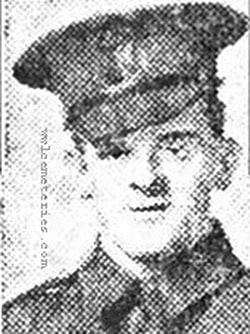
A/3567 Rifleman
A. J. Rothwell
"D" Coy. 10th Bn. King's Royal Rifle Corps
12th April 1916, aged 23.
Plot II. H. 17.
Son of James and Alice Mary Rothwell, of 57, Greenway St., Small Heath, Birmingham.
A. J. Rothwell
"D" Coy. 10th Bn. King's Royal Rifle Corps
12th April 1916, aged 23.
Plot II. H. 17.
Son of James and Alice Mary Rothwell, of 57, Greenway St., Small Heath, Birmingham.

55967 Private
Herbert J. Stanway
15th Bn. Royal Welsh Fusiliers
14th May 1917, aged 33.
Plot III. D. 1.
Husband of Ellen Stanway, of 3, Reservoir Terrace, Peru St., Salford, Lancs.
Herbert J. Stanway
15th Bn. Royal Welsh Fusiliers
14th May 1917, aged 33.
Plot III. D. 1.
Husband of Ellen Stanway, of 3, Reservoir Terrace, Peru St., Salford, Lancs.


